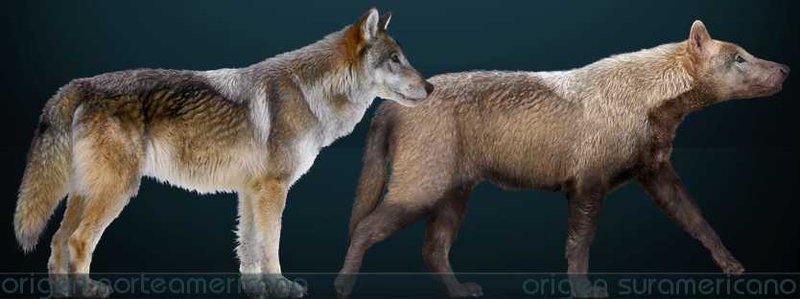Breeding Philosophy
American Dirus dogs possess beauty, intelligence, and character. American Dirus dogs are confident, trustworthy, and affectionate companions. We firmly believe that early socialization in a stimulating setting brings out the American Dirus dog's marvelous, versatile personality and enriches its entire adult life.
This picture and video below will give you a good idea of what American Dirus dog breeders are breeding towards in looks. The American Dirus dog has many aspects already. Go to the American Dirus dog Standards to read more about what an American Dirus dog should act and look like.

About our breeding:
Every American Dirus dog breeder MUST belong to DireWolf Dogs, Int'l, pass an extensive breeder's test, adhere to the strict breeding guidelines set forth by the founder, Lois Schwarz, and maintain good standing with DireWolf Dogs, Int'l at all times. These stringent requirements are put in place to encourage only the MOST serious people and discourage those who may not be as diligent.
Dire Wolf Project Breeding Philosophy:
“There are, or course, a few breeders who know exactly what they are doing, they inbreed when inbreeding is indicated; they linebreed with a purpose; and they outcross to obtain certain characteristics, which they desire to annex to their stock.” (Kyle Onstott. "The New Art of Breeding Better Dogs." page 138.)
The following topic is often hotly debated and many have strong opinions related to it. We would like to address it here, so that you can be informed about our views on the subject. For your information, the Dire Wolf Project is in agreement with the correct selective usage of inbreeding, linebreeding, and outcrossing. These three breeding practices have been extremely valuable in the creation of all new breeds of dogs, but have also been important in maintaining a dog breed's health, temperament, and conformation according to each breed's standard.
~Inbreeding - This is the breeding of closely related animals. Brother-Sister, Parent-Offspring, ½ Brother - ½ Sister.
~Linebreeding - This is the breeding of animals that share common ancestors but are not closely related. For example, the dogs may share a common great-grandparent.
~Outcrossing - This is generally considered the breeding of animals with no common ancestors within the first 4 or 5 generations. In the case of our breed, the American Dirus, it can also mean a breeding to a separate, unrelated breed which has important traits to enhance the American Dirus further towards its standards.
Common misconceptions about these breeding practices can be found everywhere and with the ease of Internet communication can be taken way out of context.
Inbreeding
Some people share the mistaken belief that breeding closely related offspring causes genetic diseases. This is false. Inbreeding can increase the possibility of genetic health issues, but does not cause them. A good breeder will know their pedigrees well. Not just the paper pedigrees, but the actual dogs that went into the breeding. Inbreeding is a quick way to 'set' wanted traits to create similarity in each litter bred. Inbreeding can also help to identify unwanted genetic traits and if a breeder closely watches her offspring, she can eliminate these unwanted traits through inbreeding and linebreeding. As you might imagine, these inbreeding benefits would be of great importance when starting up a new breed of dog. Where some get their mistaken opinions of inbreeding is through a known phenomenon called inbreeding depression. This is seen through the overuse of inbreeding or inbreeding with dogs that possess recessive deleterious alleles. Breeding closely related offspring intermittently, though, does no damage to the long term health of the puppies.
Outcrossing
Some also share mistaken beliefs about outcrossing. Some tend to think that all outcrossed dogs and/or hybrid dogs are healthier. While this may be true to a degree, such as in the case of hybrid vigor, if not used appropriately, it can also introduce unwanted traits into the lines, which can be more damaging than good. A breeder MUST use this with caution and choose only the best dog in which to outcross as well as choose the best pups per standard to further the breed's lines. All dogs which do not fit the standard after the outcross MUST be spayed or neutered in order to eliminate the possibility of their genes from re-entering the lines.
Linebreeding
The American Dirus is currently a separate line from the Schwarz Kennels dogs. This was done in order to create a larger American Dirus gene pool from which to select the best pups, but also to enhance the breed in looks while continuing to breed only the healthiest, good tempered dogs. Linebreeding, while not as quickly accomplished as inbreeding, can solidify wanted traits while keeping the pedigrees loose enough to continue to produce great health. While we may perform inbreeding and outcrossing occasionally, close linebreeding is our most valuable asset.